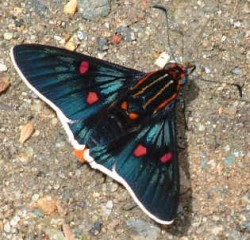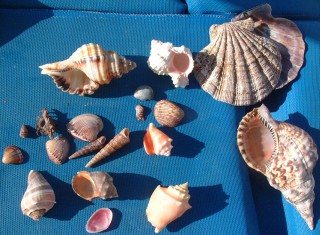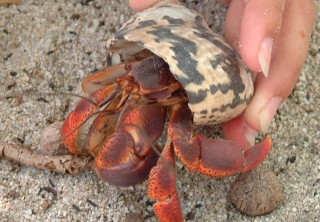
Just one of many fantastic butterflies
|
Flora & Fauna Areas Venezuela Flora/Fauna Related Pages Venezuela Home |
Thinking of a birding trip, nature tour or eco-tour to Venezuela? You can fly to either Margarita Island or Caracas. From either airport there are flights out to Los Roques National Park with its coral reefs and sandy islands. Or you can fly to Merida high in the Andes -- gateway to both the Andes and tours of Los Llanos in the Orinoco River Basin. A unique land feature of eastern Venezuela is the Tepuis -- towering rock formations rising majestically 3,000 feet (1,000m) out of the jungle in Canaima National Park, home to the world's highest waterfall. Here you'll find poison dart frogs, toucans and other tropical forest and savanna birds, plants and animals. For more about Venezuela, see our Venezuela Destination pages. |
Venezuela Flora/Fauna
 Just one of many fantastic butterflies |
Venezuela has a vast array of plants, birds and other animals. After spending many months in the West Indies we were struck by the wondrous variety of eco-regions and habitats in this huge country in the corner of South America. In Venezuela, which occupies the northeastern corner of the South American continent, you can find plants and animals of the arid coast, the high Andes, the river basin of the Orinoco and the jungles of South America. We took a two-week trip to the Andes and a four-day tour to the area known as Los Llanos ("the plains") that lie south and east of the Venezuelan Andes in the Orinoco River Basin. We traveled by van, river boat, on foot, and horseback. Our guide, whom we met through a tour agency in Merida, was originally from English-speaking Barbados, so we didn't have to struggle with the language.
Venezuela lies fully in the Tropics, but because of its variety of elevations, it has an immense range of birds, animals and plants. Check out the Venezuela Flora to see some of the amazing plants of this northern South American country. On the Venezuela Fauna page we showcase several snakes and reptiles, plus the world's largest rodent, the capybara! And for avi-fauna (bird!) buffs the Venezuela Birds page highlights some of the more common, and uncommon birds.
COASTAL/MARINE LIFE
 Some shells of the Caribbean/Venezuelan coast |
On the coasts of Venezuela's offshore islands (Blanquilla, Los Roques, Las Aves, Margarita) we found many interesting sea shells. Shells are external skeletons of soft-bodied animals known as mollusks which live in the sea. Not yet having an underwater camera, we could not photograph the animals in situ, but had to rely on these lovely shells to tell us more about the marine environment of Venezuela. These shells were collected empty (i.e. the animal had died) on the beaches in non-protected areas. On the lower right is an Atlantic Trumpet Triton Charonia varigata. Above that is a member of the scallop family. Others include milk conch, murex, and Venus clams.
 A large hermit crab, Blanquilla Island |
One animal that was very abundant on the Venezuelan coasts was the Hermit Crab. Most hermit crabs are marine, but in the tropics there are some that are terrestrial, which we believe this one on the right, is. It lives most of its live on land going into the water to breed. They are called hermit crabs because they do not grow their own protective shell, but instead find other mollusk shells to live in. They insert their soft, twisted abdomen into any shell of the right size. As the hermit crab grows it discards the old shell in favor of a new and bigger one (this is called molting). Hermits are often found under mangrove trees, in and around the air roots, and on the roots themselves. At times they are still, and other times the sand seems to seethe with movement as the crabs shuttle to and fro in search of food. They are shy and withdraw (as much as possible) into their shells when approached or picked up. Their powerful claws sometimes are able to form a "door" on their shell, protecting the rest of their body. The claws are also used for defense or to steal a shell from another crab, and can give quite a pinch to a stray finger. They are members of the genus Pagurus.
Top Level: Home | Destinations | Cruising Info | Underwater | Boat Guests | Ocelot | Sue | Jon | Amanda | Chris | Site Map | Make a Comment
|
If our information is useful, you can help by making a donation |
Copyright © 2000‑ Contact: Jon and Sue Hacking -- HackingFamily.com, svOcelot.com. All rights reserved.